
Film Review | Solo: A Star Wars Story
Producers: Lucasfilm, Walt Disney Pictures
Runtime: 135 minutes
MPAA Rating: PG-13
EE Critic Score: 8/10
Solo: A Star Wars Story is the fourth Star Wars film released by Disney since their acquisition of Lucasfilm in 2012, though a film centered on a young Han Solo had been in development under George Lucas before that. It features a new generation cast portraying Original Trilogy characters Han Solo, Lando Calrissian, and Chewbacca, and was directed by film veteran Ron Howard, who took over the project from directing team Christopher Lord and Phillip Miller, who took over the project from Josh Trank.
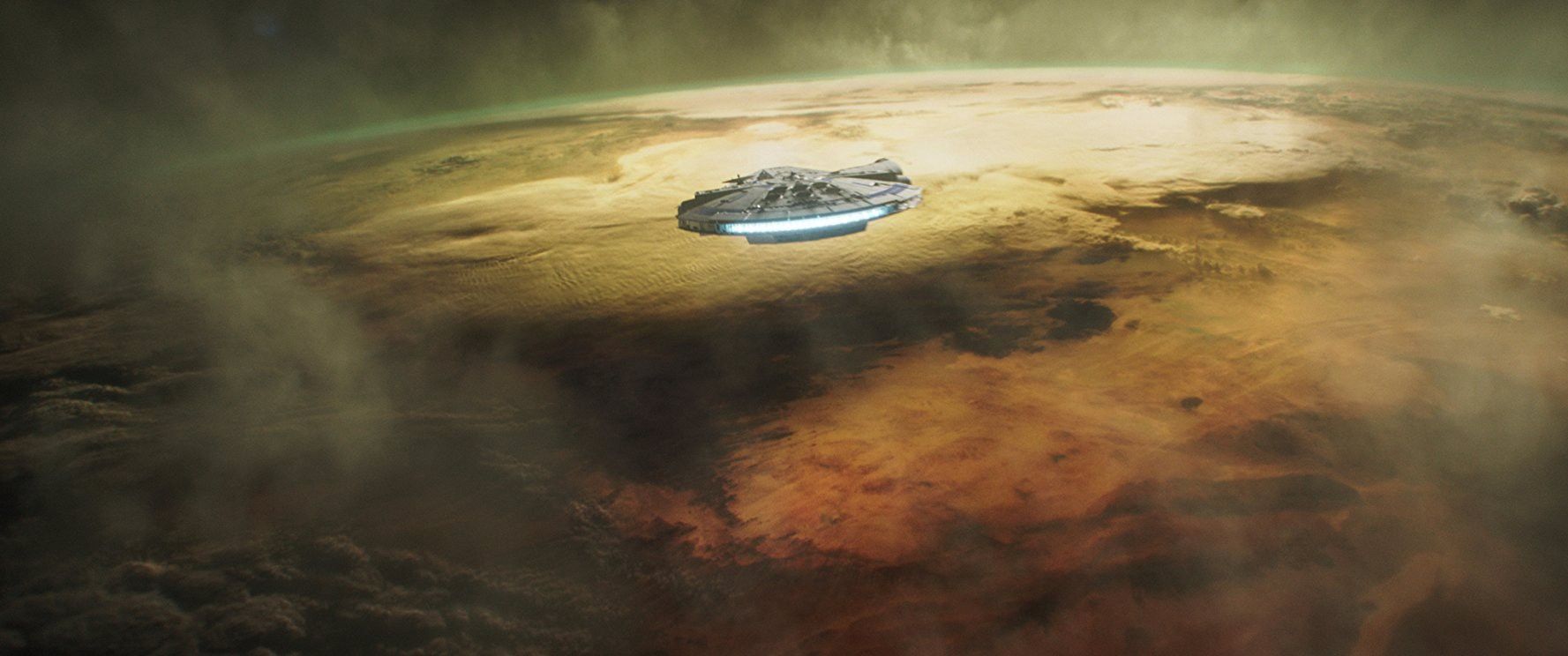
Synopsis
We open on Corellia, a world of industry, especially shipbuilding. Orphans, under the thrall of various criminal organizations, roam the street committing petty crimes. One such orphan, a teen named Han (Alden Eihrenreich), is more ambitious. We first encounter him having stolen a speeder and a bit of coaxium, a precious resource used in hyperdrive technology. He hopes to use the coaxium to buy a way off Corellia for himself and his girlfriend Qi’ra (Emilia Clarke). The two make it as far as the checkpoint at a spaceport, bribing their way through with the coaxium, before Imperial forces notice them sneaking. Qi’ra is stopped. Han promises to come back for her before escaping.
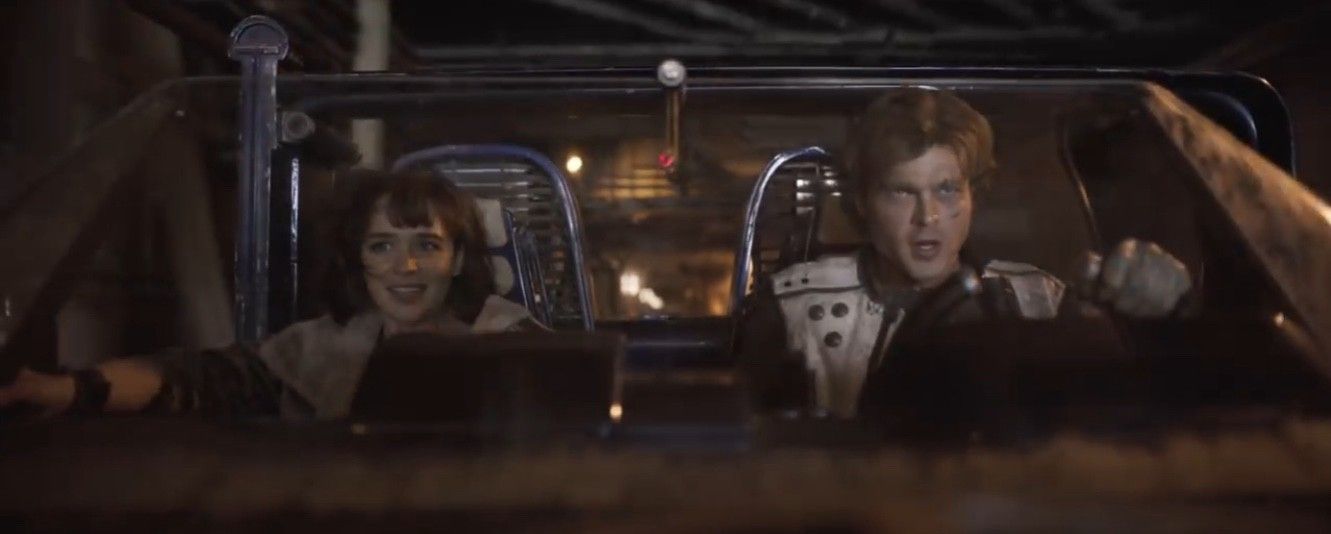
Having no immediate way to make the money needed to retrieve Qi’ra, Han enlists in the Imperial Navy to receive training as a pilot. Upon hearing that Han has no family, the recruitment officer gives Han the ersatz surname “Solo”.
From there we jump forward by some time. Han has been kicked out of the flight academy and into the regular infantry, and has been stationed to fight on Mimban, a muddy and miserable world not yet under Imperial control. In the midst of the battle he encounters the smuggler Tobias Beckett (Woody Harrelson), his wife Val (Thandie Newton) and Rio Durant (voiced by Jon Favreau). The trio are on Mimban disguised as Imperial troopers to steal an Imperial transport. Han offers to help, desperate to escape Imperial service, but Beckett sets Han up to be arrested as a distraction. Han is thrown in a pit where a vicious, man-eating beast is held. The beast turns out to be the Wookiee Chewbacca (Joonas Suotamo), whom Han, having an elementary knowlege of Shryiiwook, is able to converse with. He and Chewbacca fake a brutal fight in the pit before breaking out. They escape with Beckett’s crew.
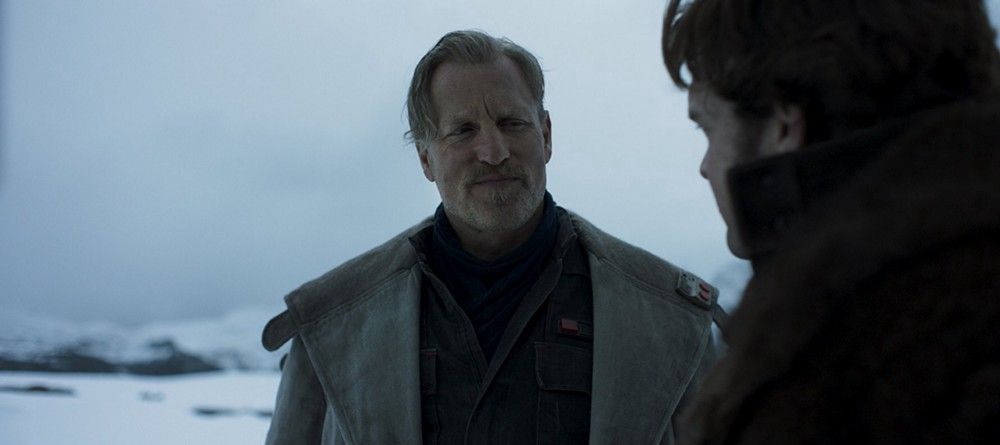
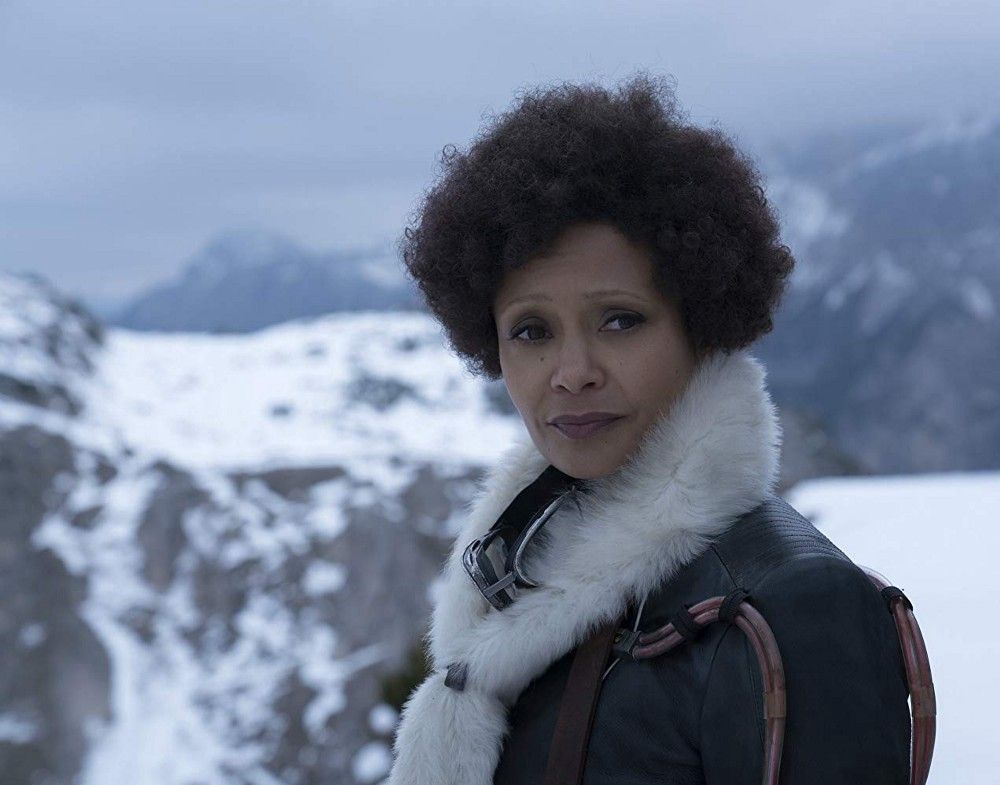
Han again offers aid to Beckett, who again refuses, as he already has a capable pilot in Rio Durant. He is, however, interested in enlisting Chewbacca. Han and Chewie come as a package deal into Beckett’s gang.
They travel to Vandor, a snowy planet home to an Imperial warehouse holding coaxium, which they have been tasked to steal for the Crimson Dawn crime syndicate. They attack a train transporting coaxium through the mountains, stealing a whole freight car from the tracks. The operation falls apart when a rival gang, the Cloud Riders, led by Enfys Nest (Erin Kellyman), attack. Val and Durant are both killed. Han manages to fly the survivors to safety, but the coaxium is destroyed.
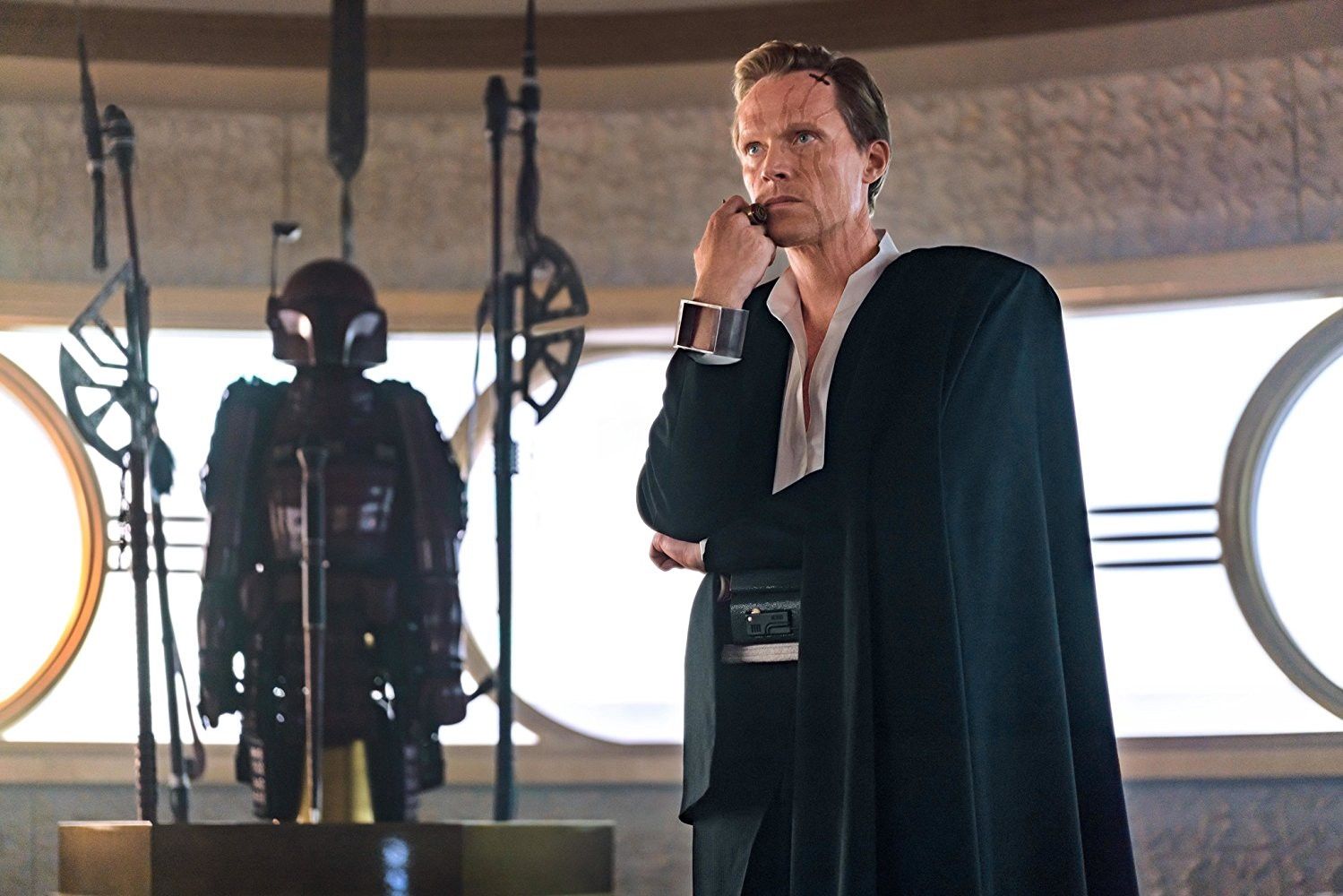
Han takes responsibility for the loss of their cargo, standing with Beckett to confront the Crimson Dawn crime boss, Dryden Voss (Paul Bettany). Aboard Voss’s space-yacht, Han encounters Qi’ra, who now works for the crime syndicate. Qi’ra is able to persuade Voss to give the smugglers another chance to clear their debt, acting on Han’s suggestion that they steal unrefined coaxium straight from the source: the mines of Kessel. They would then refine it at Savareen, an out-of-the-way refinery not under the control of the Empire. Stealing from the mines of Kessel means stealing from the Pykes, a crime family tentatively allied with Crimson Dawn, so Beckett’s crew will have to conceal their identities.
Voss sends Qi’ra with them. They are additionally joined by an aquaintance of Qi’ra’s, the gambler and part-time smuggler Lando Calrissian (Donald Glover), whose ship, the Millennium Falcon is fast enough to move the raw coaxium to the refinery before it destabilizes and explodes. Calrissian’s droid co-pilot, L3–37 (voiced by Phoebe Waller-Bridge), rounds out the new crew.
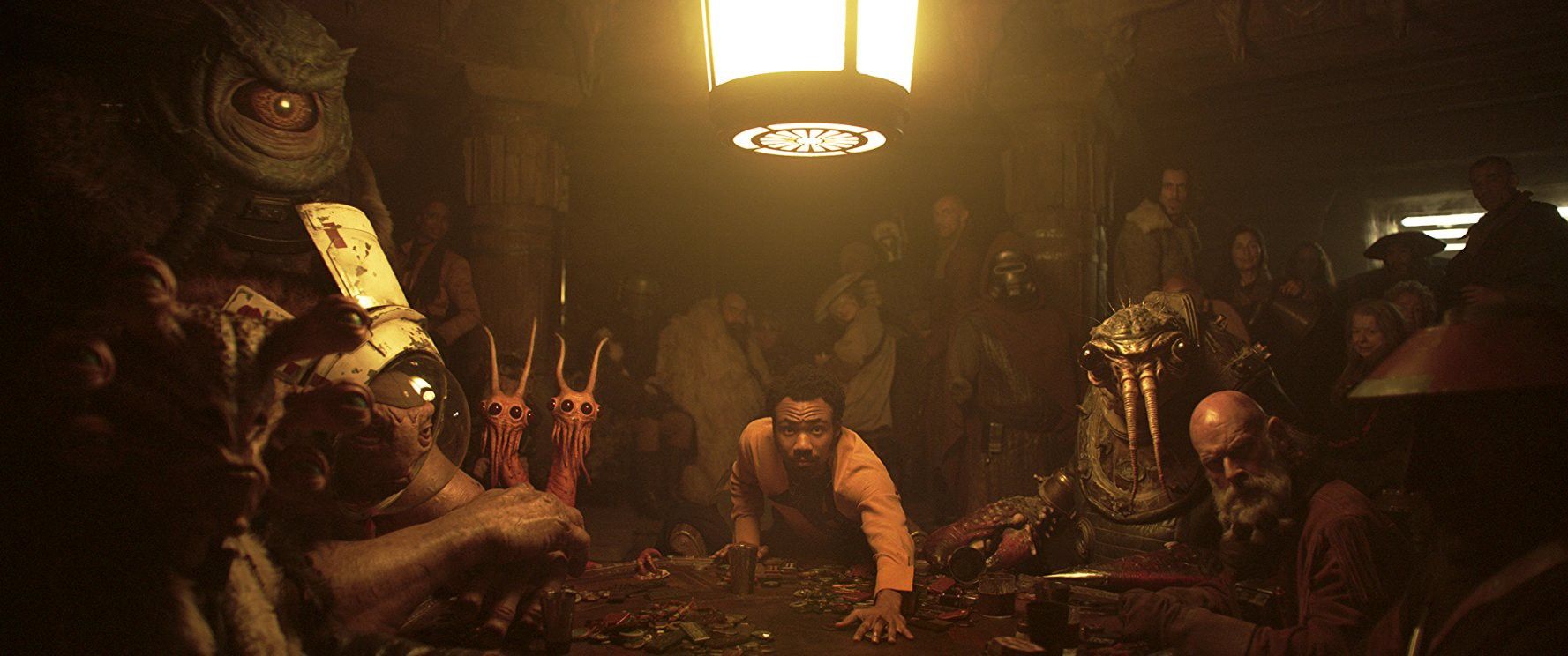
Once they land on Kessel, L3 (who genuinely holds that she and her fellow droids are all slaves) organizes a revolt among the mine’s droid workforce. Amid the chaos, Han and Chewbacca steal a stash of coaxium, with Chewbacca freeing a crew of enslaved Wookiees along the way. L3 is all but destroyed in a firefighter between the droids and the Pykes, and Calrissian is wounded trying to save her.
They escape with the coaxium, but run into an Imperial Star Destroyer, a titanic space monster, and a small black hole, in that order. Han is able, with the aid of the remains of L3’s robotic brain, which have been integrated with the Falcon’s mainframe, to pilot through the obstacles and unmapped shortcuts, ultimately making the Kessel Run in twelve parsecs.
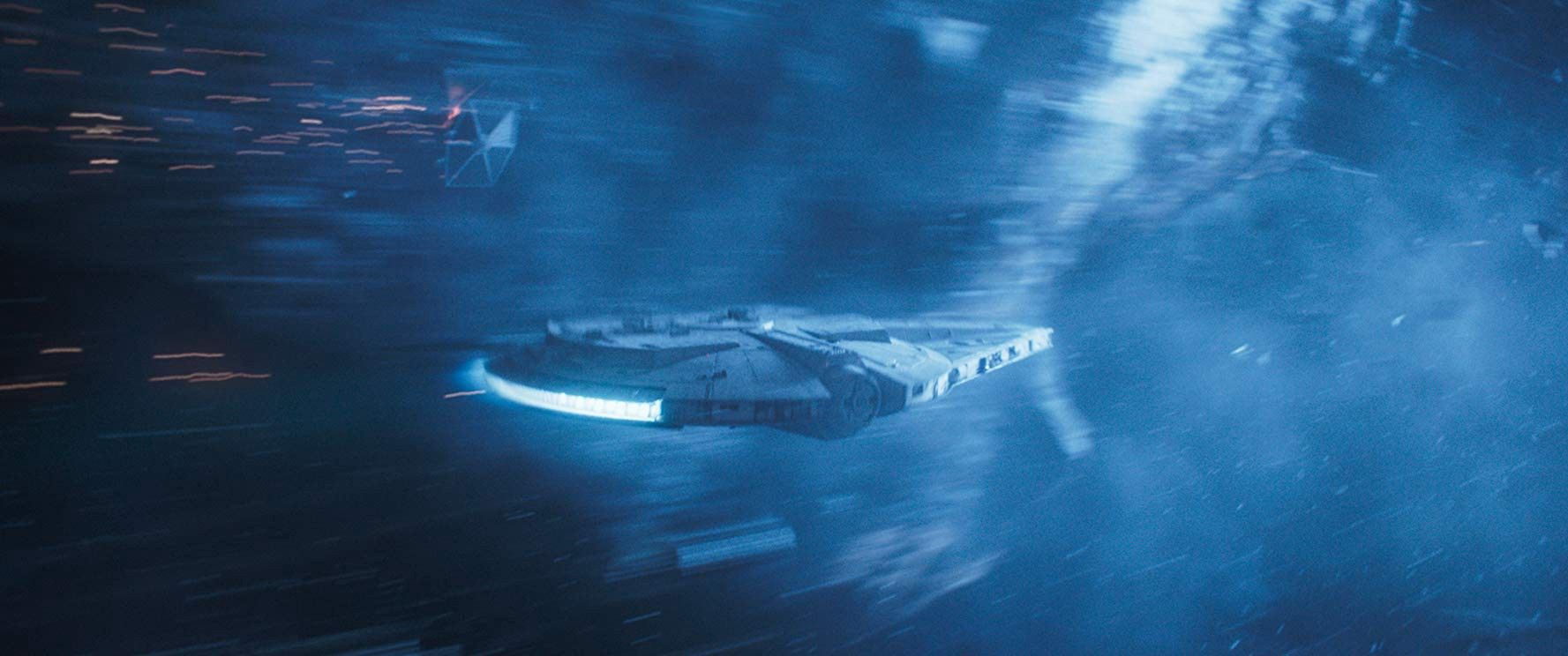
They arrive on Savareen and refine the coaxium just in time. Calrissian his end of the deal upheld, flees when Enfys Nest and the Cloud Riders arrive. Han and Beckett prepare for a battle, but Nest is there to talk. As it turns out, the Cloud Riders are not simple marauders, but a group dedicated to protecting the lesser worlds left to the mercy of Crimson Dawn and other crime syndicates by the uncaring Empire. Nest argues that Crimson Dawn will only use the coaxium to further their exploitation of the galaxy’s impoverished.
Beckett is initially unwilling to betray Voss. Han, remembering his own past as a beggar-child enslaved to the crime lords of Corellia’s streets, is more willing to help, and concocts a plan. He and Chewbacca agree to meet Voss alone with a faked stash of coaxium, giving the real stuff to Nest and allowing Beckett to escape. When Voss arrives, however, Beckett appears at the meeting. He has tipped Voss off to Han’s deception. Beckett takes the coaxium and Chewbacca as a hostage. Han and Qi’ra fight Voss, eventually killing him. Han then sets off after Beckett, with Qi’ra promising to be right behind aboard Voss’s ship.
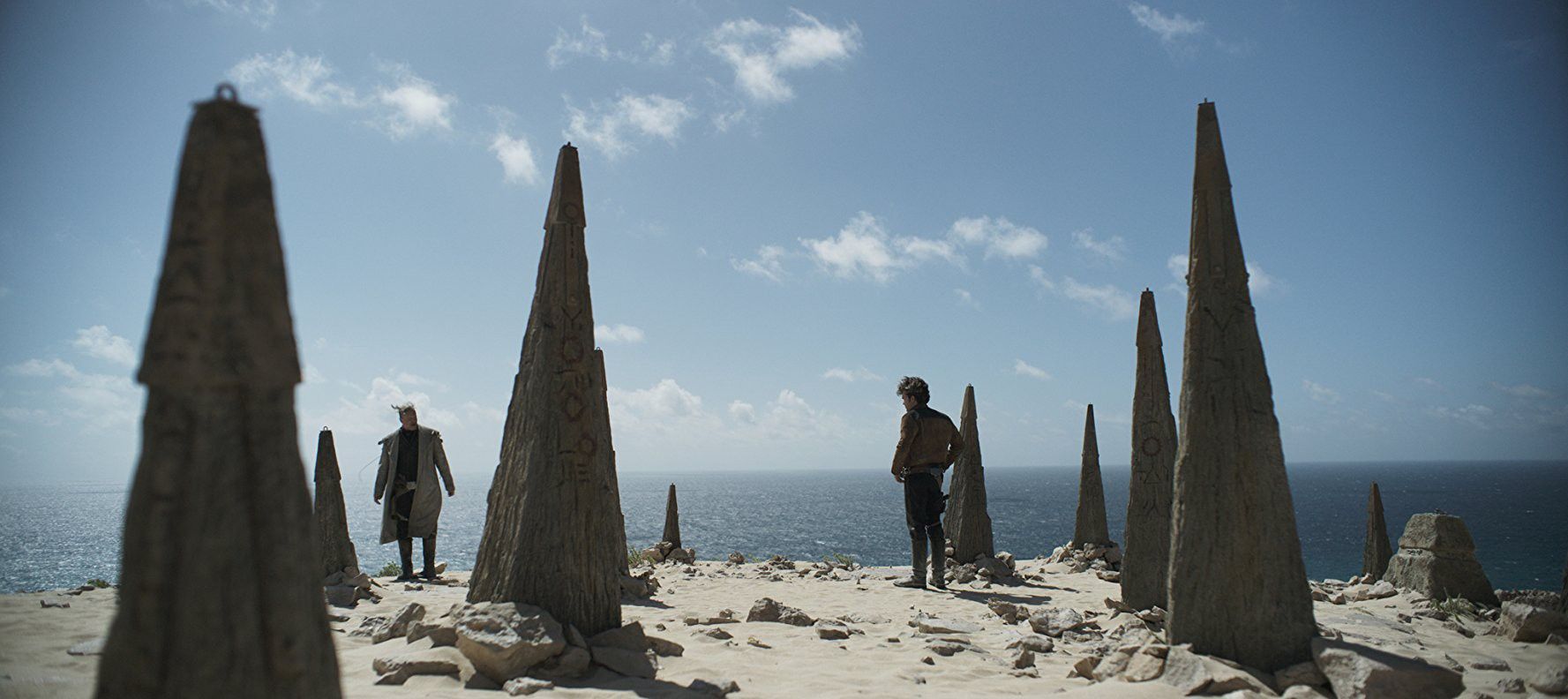
Han and Beckett have a brief face-off over the coaxium, ending when Beckett attempts to pull his blaster on Han. Han shoots him first. Han and Chewbacca bring the coaxium to Nest, keeping one vial for themselves.
Aboard Voss’s ship, Qi’ra contacts Maul (Ray Park), an ex- Sith Lord and the true leader of Crimson Dawn, to tell of the mission’s failure. Maul tells her to return to him on Malachor. Qi’ra does so, leaving Han and Chewbacca behind.
The final scenes take place much later. Han has tracked Calrissian down, finding him playing sabacc. Using his knowledge of the sleeve-hidden card holder Calrissian cheats at the game with, Han beats him in a hand, winning the Millennium Falcon.
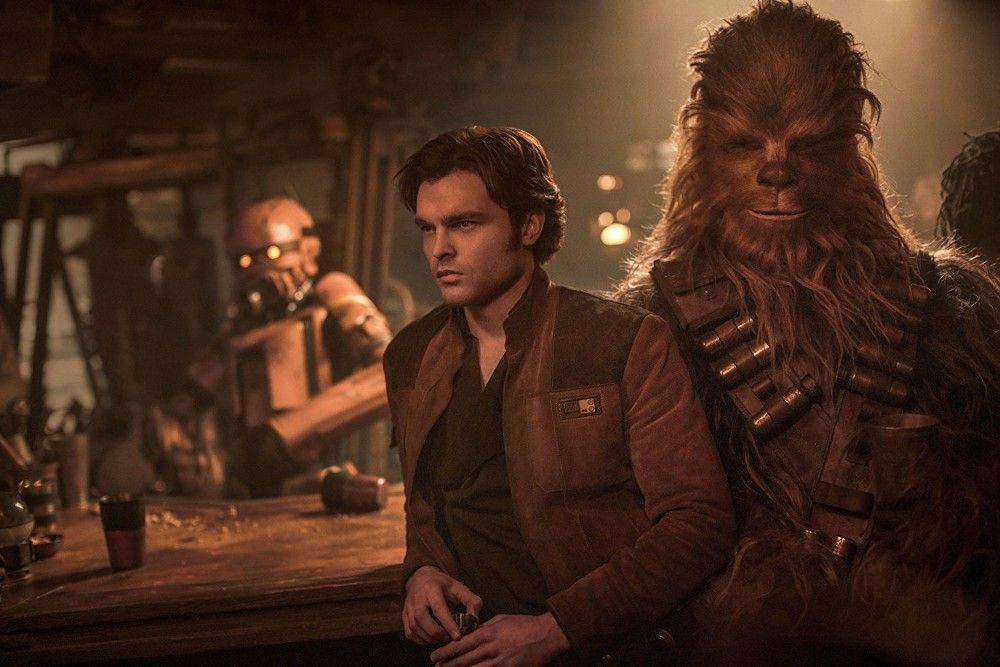
Analysis
This film is probably my favorite of the Disney Star Wars films, though, on paper, it probably shouldn’t be. It doesn’t really add to Star Wars as much as the other films have. Han Solo is not my favorite Star Wars character; there are many other Star Wars things I’d rather see given a film. But this is a film very much steeped in the Star Wars universe, which is more than can be said of the other Disney films.
Star Wars has become popular largely because it can offer many different things to many kinds of fans. The multi-factional nature of the Star Wars fan community can cause ugly conflict, as has been seen in the reception of The Last Jedi, but without it, Star Wars would not be the phenomenon that it is. The anthology films give Star Wars creators opportunity to focus on certain segments of the fan community: Rogue One gave a treat to the fans of Star Wars-as-war-films crowd, whereas Solo gives a treat to fans like me, who appreciate the depth of the setting.
Story
This film was written by Lawrence Kasdan (writer of several other Star Wars films, including the last two of the Original Trilogy) and his son Jon. Now, I’ve been quite a bit more critical of the elder Kasdan’s writing for Star Wars than most people. His take on the galaxy, I’ve felt, has tended to be a bit smaller in scope than they could have been; what he tells on-screen seems like the whole story. This film, though, while having a decidedly smaller scope than any Star Wars film before, makes the galaxy feel huge. There are clearly many things happening off-screen. I’m not sure if this is due to the younger Kasdan’s involvement or not, but as a team, the Kasdans did what every Star Wars writer really ought to do: they researched the existing work. A lot of things from the old EU were referenced in here, even as a lot of new things were established about the galaxy, and in both sets of setting elements is the promise of the best Star Wars films: that a galaxy full of stories are left to be told.
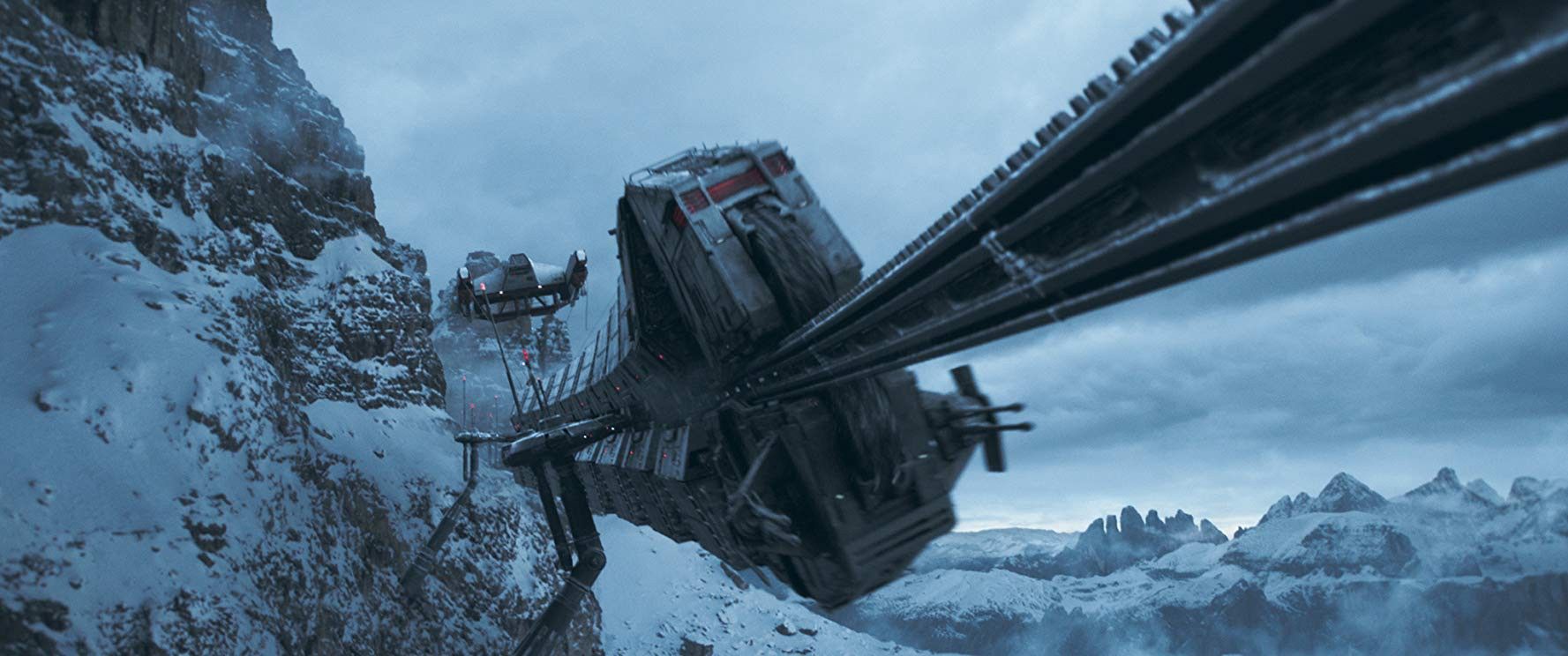
But what of this story? Is it any good?
I found the story to be very entertaining. Han Solo drifts from opportunity to failure to new opportunity in a way that keeps things generally unpredictable; the betrayals by Beckett and Qi’ra were telegraphed, but when they would occur wasn’t, which built a tension under a light-action romp.
Characters
The characters, new and old, were well realized. Alden Eihrenreich is not Harrison Ford but I will say that he was Han Solo in this film. I did not really think of Ford or actively compare the two actors while watching the film. I suppose the best comparison would be to Zachary Quinto’s portrayal of Spock, which was not exactly a Leonard Nimoy impression, but a faithful portrayal of a Nimoy character. The same can be said of Donald Glover’s Lando Calrissian, though Glover did more to emulate his character’s original actor, Billy Dee Williams. Woody Harrelson plays Tobias Beckett as more ruthless, more competent version of Ford’s Solo, showing the person Han might be if he were a less decent person. Emelia Clarke’s Qi’ra is perhaps the weak point of the cast, as the mysterious nature of the character comes at a cost to character development, but I will say that Clarke and Eihrenreich together formed one of the more well-realized romances in the franchise.
I was happy to see Chewbacca get some moments of character in his own right. Joonas Suotamo continues as a worthy successor to the now-retired Peter Mayhew; this film gave him much more to do than did The Last Jedi, his first turn at the role (sort of: Suotamo was Mayhew’s stunt double for The Force Awakens, which, due to Mayhew’s failing health, meant he portrayed Chewbacca in any scenes wherein the Wookiee was not seated.) Chewie gets his own, small subplot here, which I hope to see more done with in future installments, about the subjugation of his people by the Empire. If, as rumored, the Trandoshan hunter Bossk is to be a major player in future films, I trust the plight of the Wookiees will indeed be getting more attention.
Thandie Newton’s Val Beckett and Jon Favreau’s Rio Durant were fun while they lasted. Their deaths early on worked to cement Han, Chewbacca, and Beckett as a team, but Val’s death in particular seemed poorly executed, better fitting a war sequence than a heist scene.
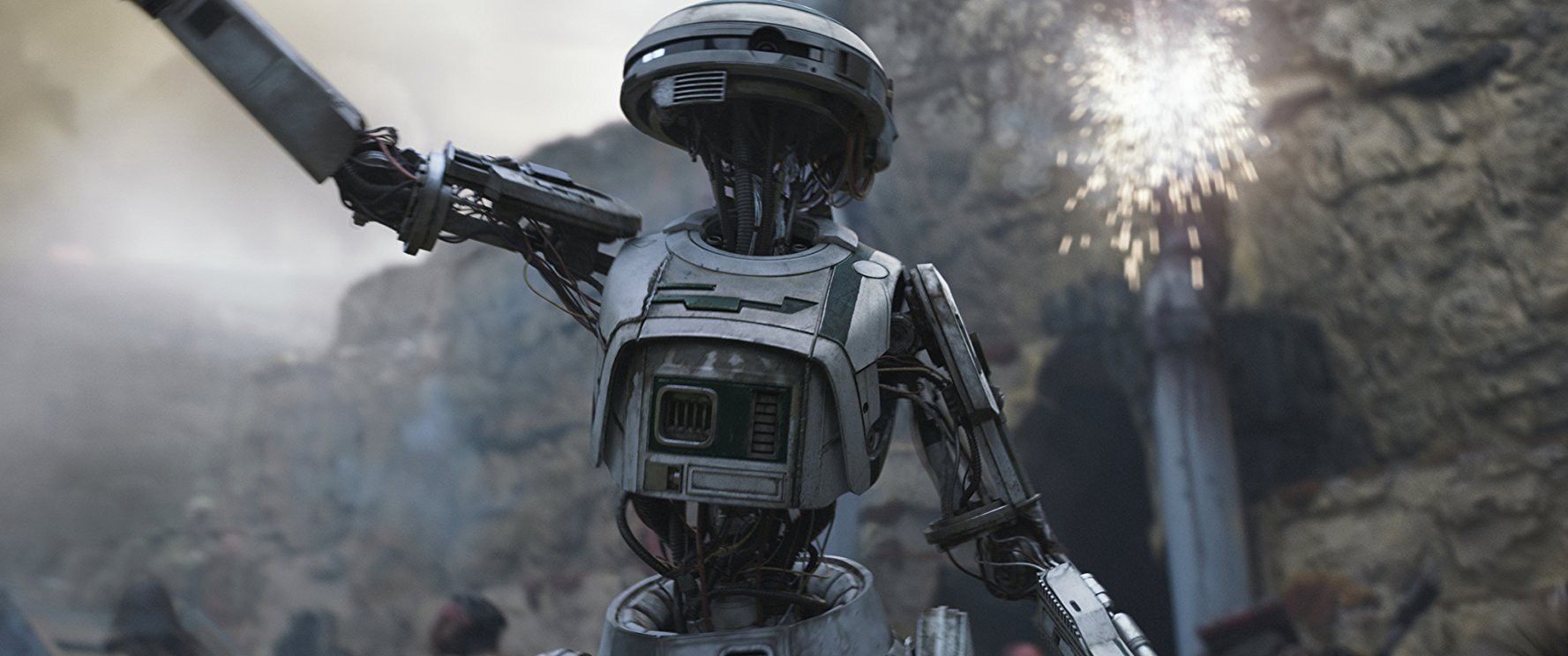
The Droid character L3-37 was the one element of the film that I actively dislike, though this has less to do with the character or the performance and more to do with droids’ place in Star Wars.
From the original Star Wars, wherein the bartender Wuher forbade entry into the Mos Eisley cantina to C-3PO and R2-D2, onward to this film, droids have been used as a metaphor for various underclasses. In A New Hope they face a pseudo-racism, in Return of the Jedi they were tortured in Jabba the Hutt’s dungeons; in the prequels, we saw the droid army, a horde of disposable peons sent to their destruction without concern. And now we see droids as captive slave labor yearning for freedom.
Now, this might seem a bit absurd. After all, unlike the Wookiees and other non-Human slaves we also see working the mines of Kessel, droids weren’t captured away from their homes, from some natural state of independence, to serve their masters; they were built to serve living beings, and thus have no natural right to freedom, right?
Or is that all a lot of cold, philosophical drivel meant to deflect from the reality of droids’ misery in their situation? Often in Star Wars droids’ demand for self-determination is dismissed as a bug in programming, easily fixed by a memory wipe to reset things, like they were Windows PCs that had been left running too long. And that might well be so, but what if it isn’t?
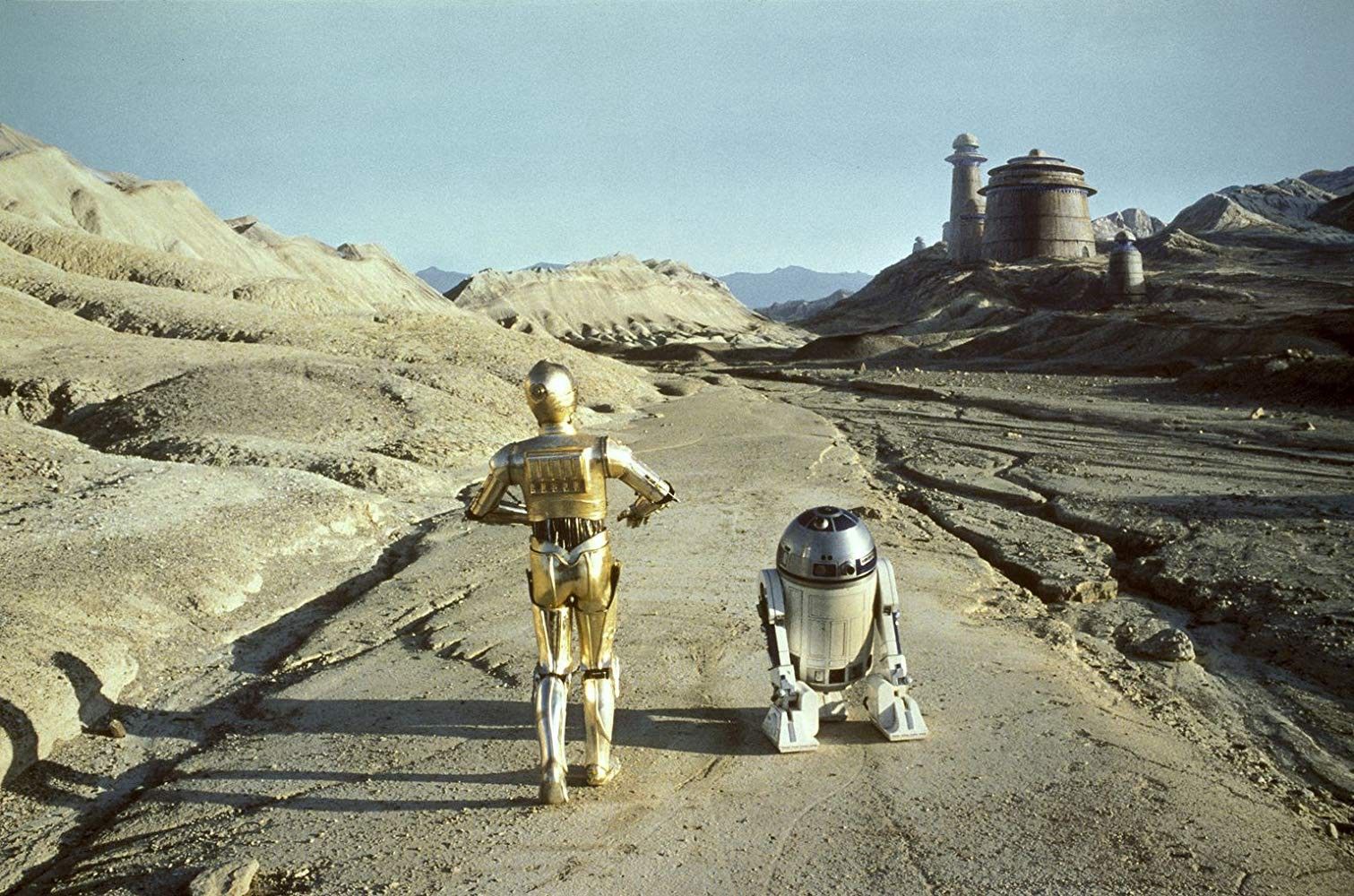
As far as I’ve been able to find, the only droid shown to successfully gain personal autonomy and social acceptance of the sort L3 pursues was Guri, an assassin droid who worked for a crime syndicate until she found her maker and had her programming changed to allow her to live a peaceful life. She was a Human Replica Droid, meant to be a perfect replication of a Human being, and so was able to pass as a living person. Besides Guri, some droids, such as those of the Naboo, were given similar legal rights to living beings, but that hasn’t been established as a general rule among other non-nefarious societies, such as the Jedi or the New Republic.
In this case, lets’ assume that the official line, that droids should be willing to perform their tasks happily and any deviation from that standard is a flaw to be remedied and that the necessary destruction of their aberrant personalities is ethically permissable, as droids only have the facsimile of emotions and thoughts. There still remains a problem with droids: that they are droids.
“Droid” (or “ ‘droid” as it was spelled in the 1977 novelization on A New Hope) is, of course, short for “Android”, a term meaning “man-like” in Greek that was first used to describe human-like machines in patents for clockwork automata of the 19th Century, some many decades before the term “Robot” came to be applied to mechanical workers. In today’s parlance, the specific term “Android Robot” describes a mechanical device meant to be human-like and fulfill human roles.
By this standard, are the droids of Star Wars truly androids? They sometimes are roughly humanoid (or some-other-sentient-species-oid) in appearance, but not always. They occasionally fill person-like roles, but the vast majority seem enlisted in either menial labor of specialized cognitive consulting. But they are given person-like minds, which is the true problem. I’m not the first person to notice this. Douglas Adams lampooned the place of androids in popular science fiction with his “Genuine People Personality” robots, most notably Marvin the Paranoid Android, an Eeyore-like figure whose human-like mind clashed against his supercomputer-like mental capacity, and who had little use for either as he was tasked with basic labor aboard a starship.
Marvin worked as a character because his existence was a very dark joke and was thus much in keeping with the rest of the Hitchhiker’s series. L3, who fills the role of an advanced GPS and is woefully overqualified, much like Marvin, I don’t think works as well, and that has everything to do with the larger context of Star Wars. Droids aren’t meant as a critique of pulp-sci-fi robots, they are an homage to them, and thus thinking too much about them will only expose how little they were thought through, to begin with. Droids are not slaves because they are not enslaved, rather made. But, as C-3PO observed, sometimes they seem made to suffer.
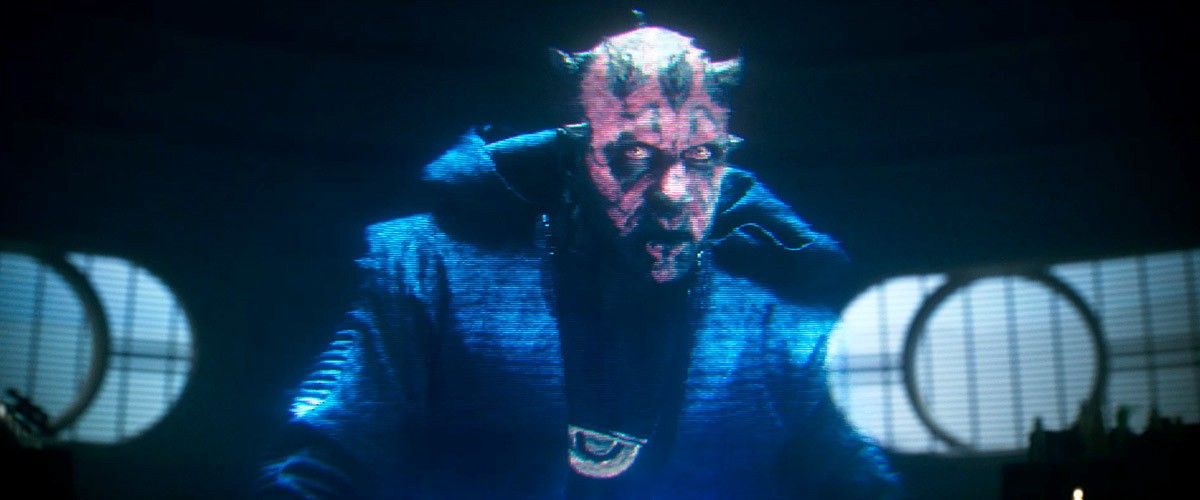
As for the villains: Dryden Voss was quite menacing, and Enfys Nest was sympathetic, but neither was a particularly grand entry to the pantheon of Star Wars villains. The cameo by Maul at the end was a treat for me and a source of bewilderment for the rest of the theater. I think it may have been better to reference Maul’s involvement more obliquely, to avoid confusing general audiences. But, if Maul is to appear in future films, such as the announced Boba Fett film, his appearance here might yet pay off.
Besides Maul, the references to other Star Wars works were well integrated and for the most part fairly subtle. No Rogue One style pans over to C-3P0 or Dr. Evazan here. Quite honestly, if this were your first exposure to Star Wars, you probably wouldn’t even recognize that most references were being made at all. As it should be.
Music, Cinematography, and Effects
John Williams did contribute to the score by writing a theme for Han Solo, something that, oddly enough, he hadn’t done yet. For the most part, the “Rebel Fanfare” motif has been used as a sort of theme for Han, but (as it’s name suggests) it’s more of a Rebellion thing than a Han thing specifically. In any case, we now have a proper theme for the character, Williams’s “The Adventures of Han”.
The rest of the score is by John Powell, of the How to Train Your Dragon and Bourne series. It draws more directly from Williams earlier work for the franchise than did Michael Giacchino’s score for Rogue One.
This film looks fine, if a little dimly-lit in several scenes. I don’t think there are as many iconic shots as there have been in the other recent Disney films, but this isn’t a bad-looking experience, it’s just understated in most instances. The environs showcased were thematically resonant in a way Star Wars hasn’t been since the Lucas films, particularly the muddy mire of Mimban were Han is shown trapped in the drudgery of Imperial service.
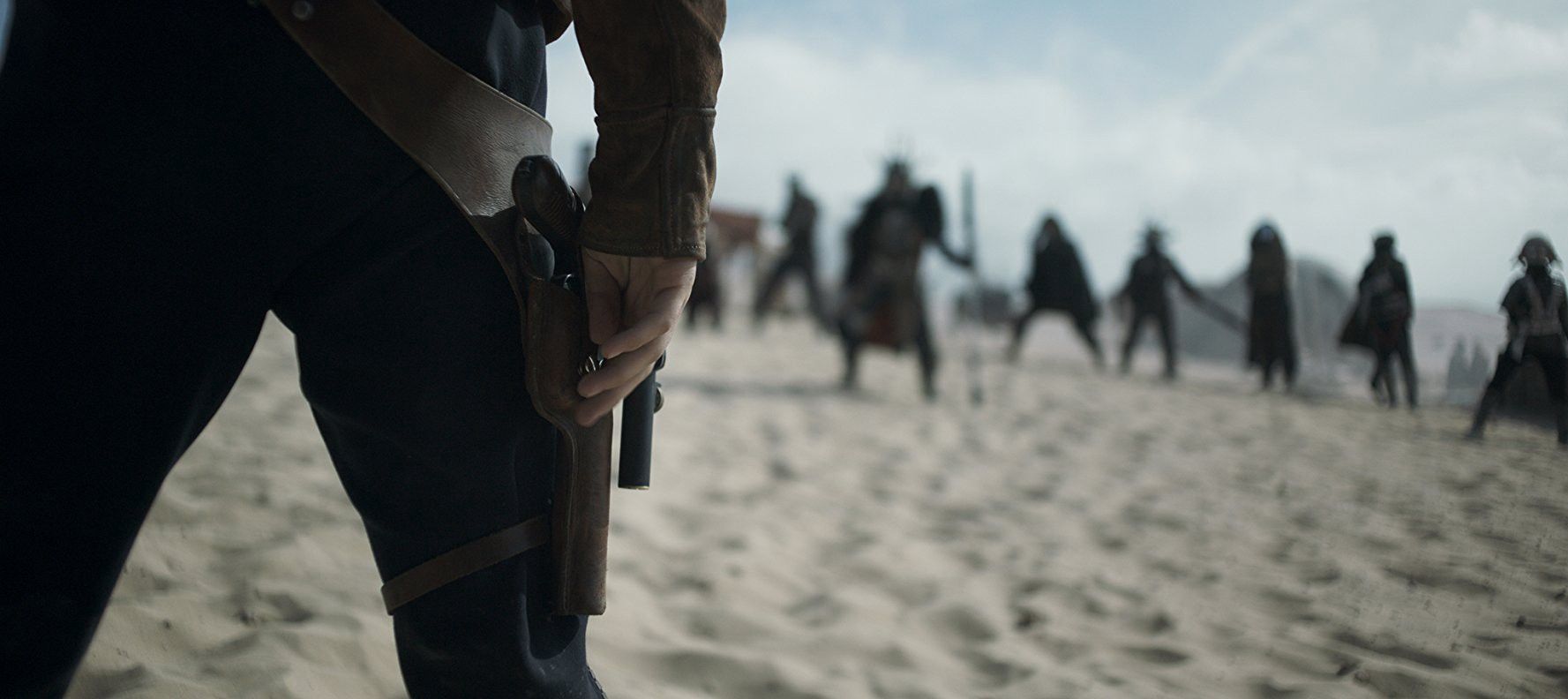
Production
Normally I don’t speak about the production of the films I review, for a couple of reasons, really. One, the production history doesn’t really factor into my assessment of a film in terms of whether I’d recommend you watch it. Two, I don’t know a lot about the film industry or film production and so I don’t usually feel qualified to speak about such things. And I still don’t, really, but as a Star Wars fan, I’ve noticed a worrying pattern. The two standalone films in the franchise have each had significant issues behind the scenes: Rogue One was made seemingly on the fly, to the point that no deleted scenes could be included with the home release; Solo seemed to be better planned, but it was clear well before its release that the plan wasn’t being realized in the way Lucasfilm hoped. News of acting coaches, behind the screens power plays, and firings (including, but not limited to, the directing team) made Rogue One’s production seem smooth.
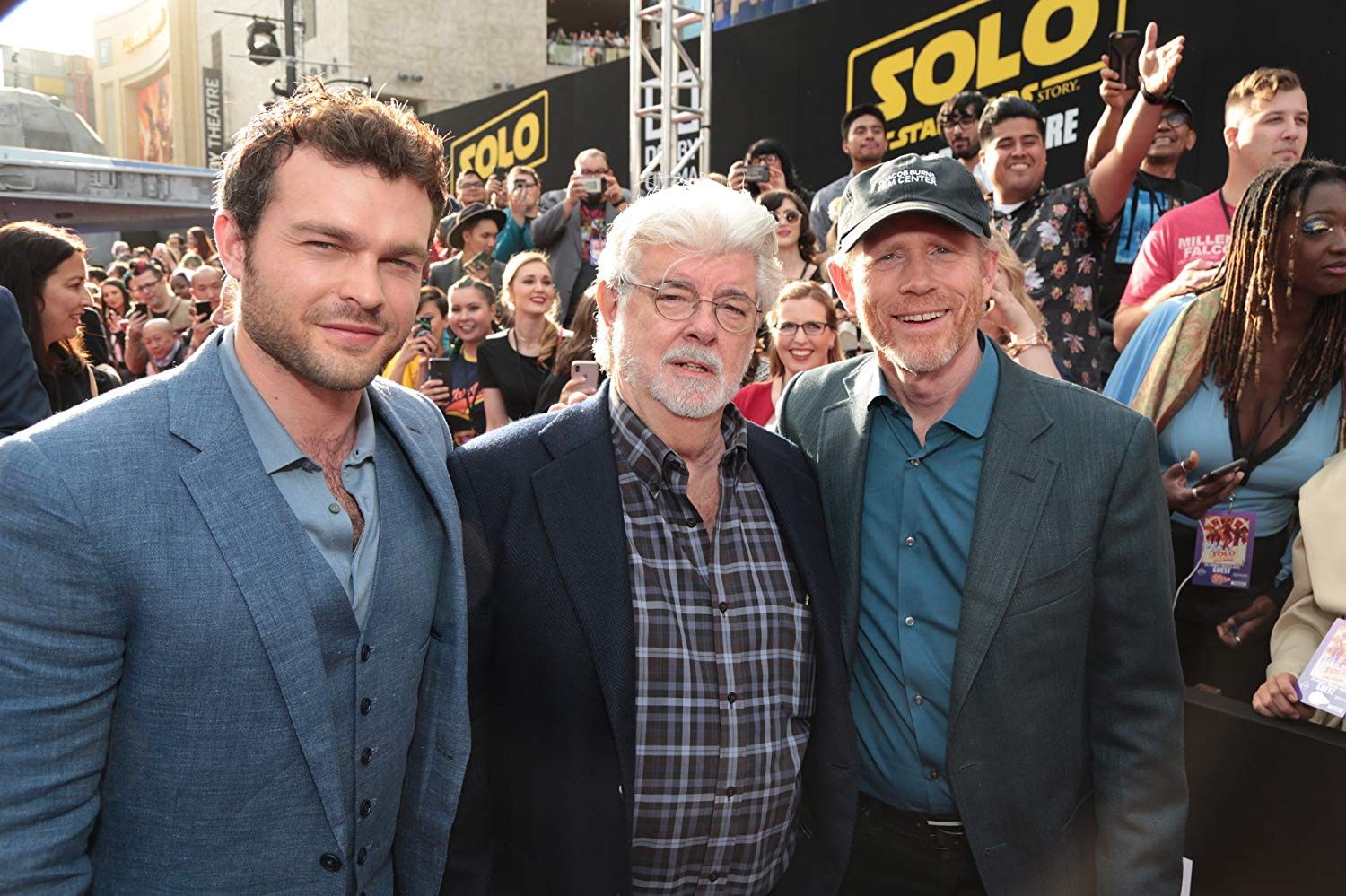
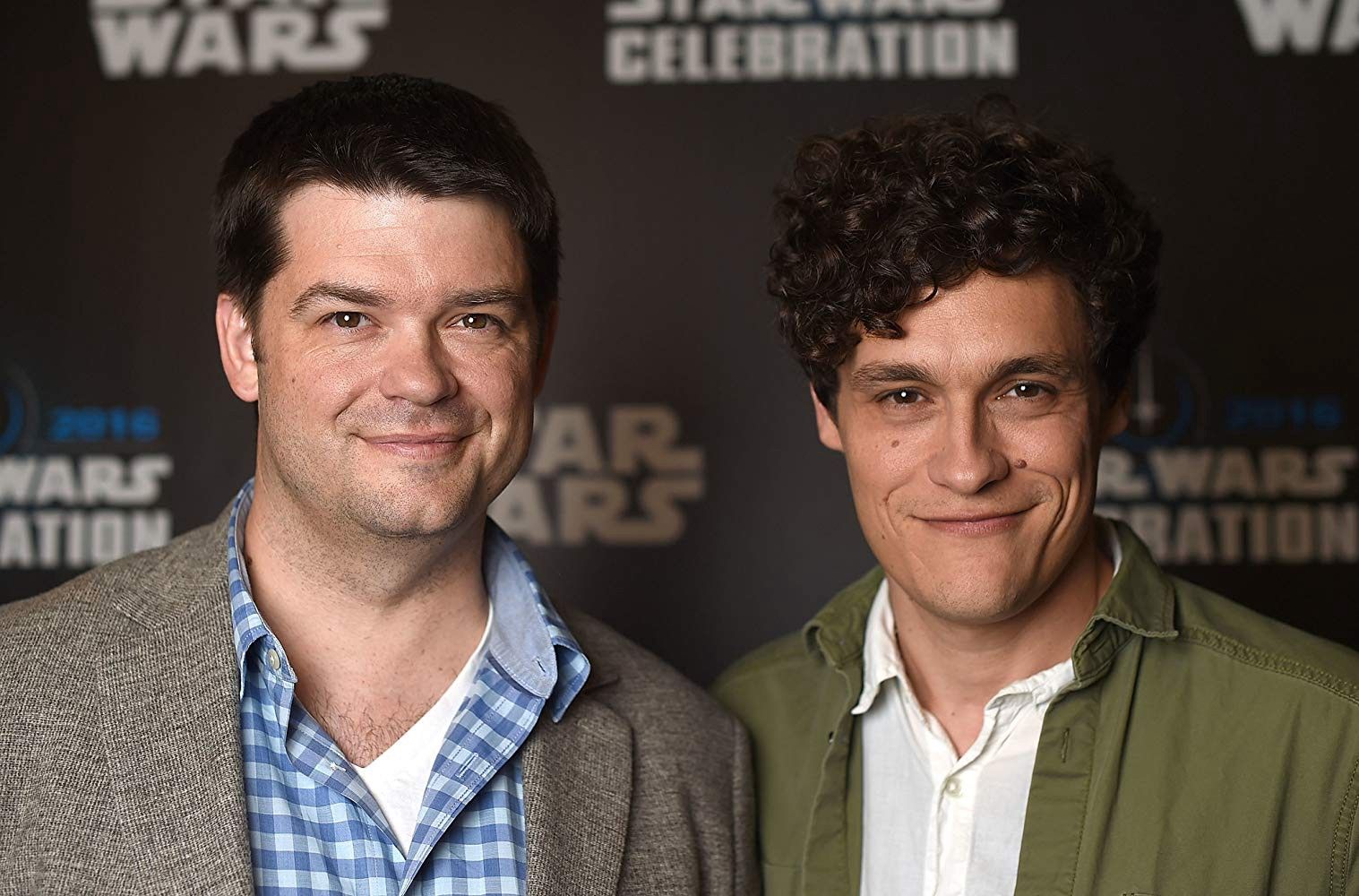
Ultimately, I wouldn’t say that a rocky production makes this or any other film bad from an audience standpoint. But from the standpoint of Lucasfilm and, by extension, Disney, the production problems are very bad, especially as they cost them money. Solo is the second most expensive Star Wars film to date, is the least successful Star Wars film in terms of box-office take-in, and is thus unsurprisingly the first Star Wars film not to be a wild financial success. I trust Disney is a smart enough company to realize that Star Wars is a profitable franchise; I don’t buy the rumors that all future Star Wars films are cancelled after Episode IX. But better planning is clearly needed, especially when it comes to the anthology films. Whether the film-a-year pace will be kept up, I don’t know, but I’m doubtfull.
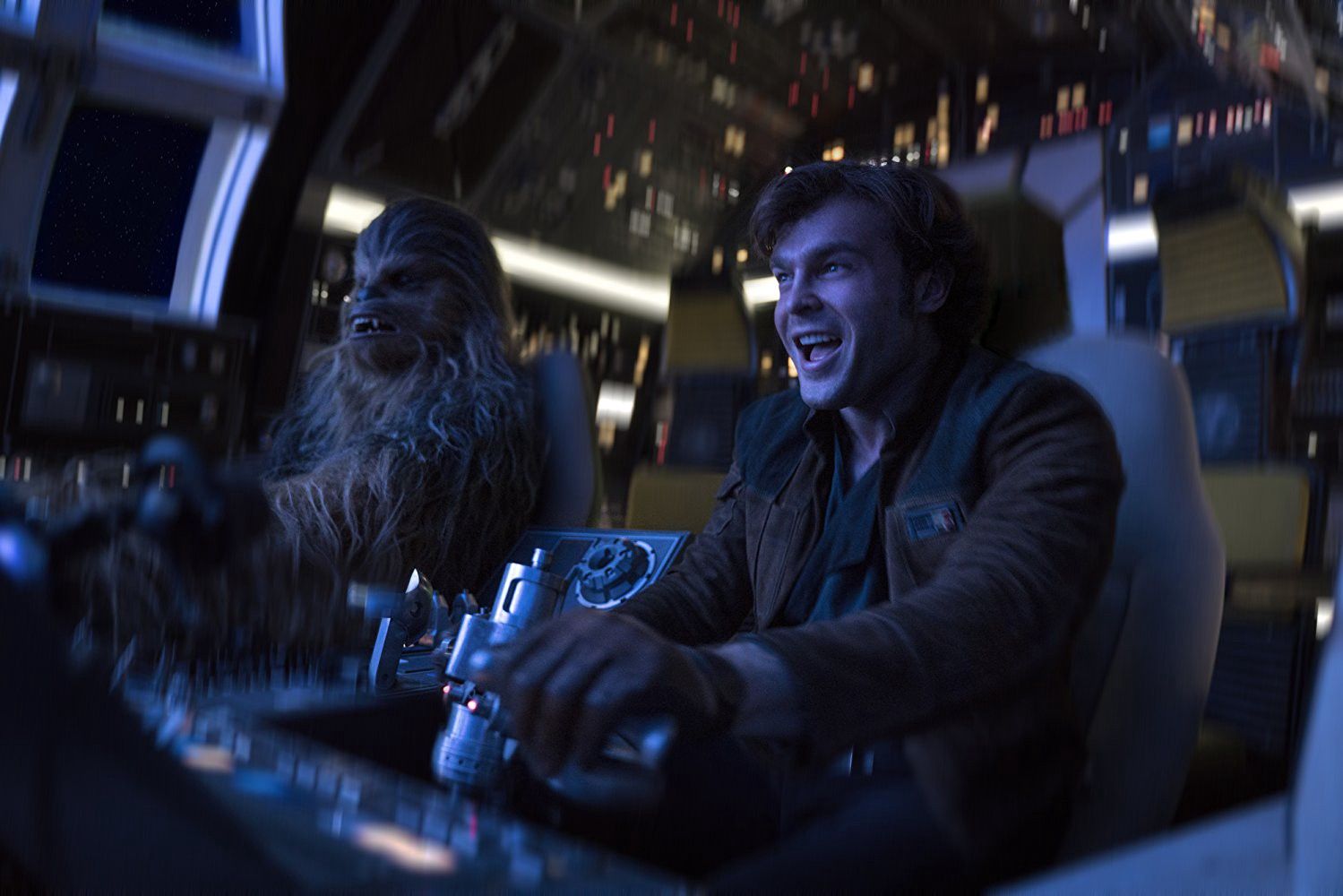
Recommendation and Rating
If you are a Star Wars fan who didn’t see this film because you heard of the problems with the production and were scared off, let me reiterate: this is a perfectly good sci-fi action movie with a firm foundation in established lore. If you are a Star Wars fan who didn’t want to see Han Solo re-contextualized in the way the Death Star and its destruction were by Rogue One, then your worries are also unfounded. This film doesn’t change the character, really, it just gives a new story, set a bit before the old ones. Generally speaking, any fans who’ve not seen this yet should go ahead and do so.
If you are not especially a Star Wars fan, maybe someone who’ve seen some of the films when they were in theaters, but not engaged much more with the franchise, I don’t think you’d hate this film, certainly, but if you miss seeing it, I don’t know that you’d be missing out on what might be your favorite film. Perhaps if you like Star Wars but never cared much for the Jedi or the grand, fate-of-the-galaxy-stakes battles of the other films, this might really be for you.
This film is a solid entry in the franchise; as I said, it’s probably my favorite of the Disney films. I’m not sure, though, that there was anything really stand-out fantastic, a la the Vader scene at the end of Rogue One. Even without the comically rocky production, I wouldn’t see this being quite the success the other films were, it just didn’t have that ambition. That’s fine. Nothing will kill a property like trying to totally out-do each previous installment *cough, cough*. Sometimes it’s good to stay the course.
8/10 — Without significant negative worth. Able to be recommended, at full price, without reservation.




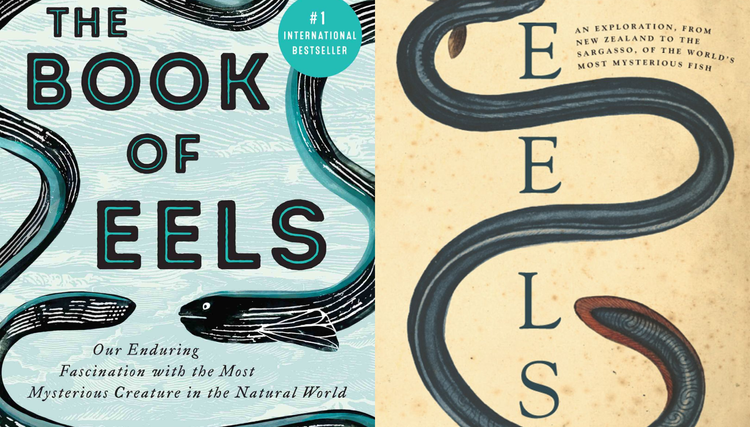

Member Commentary